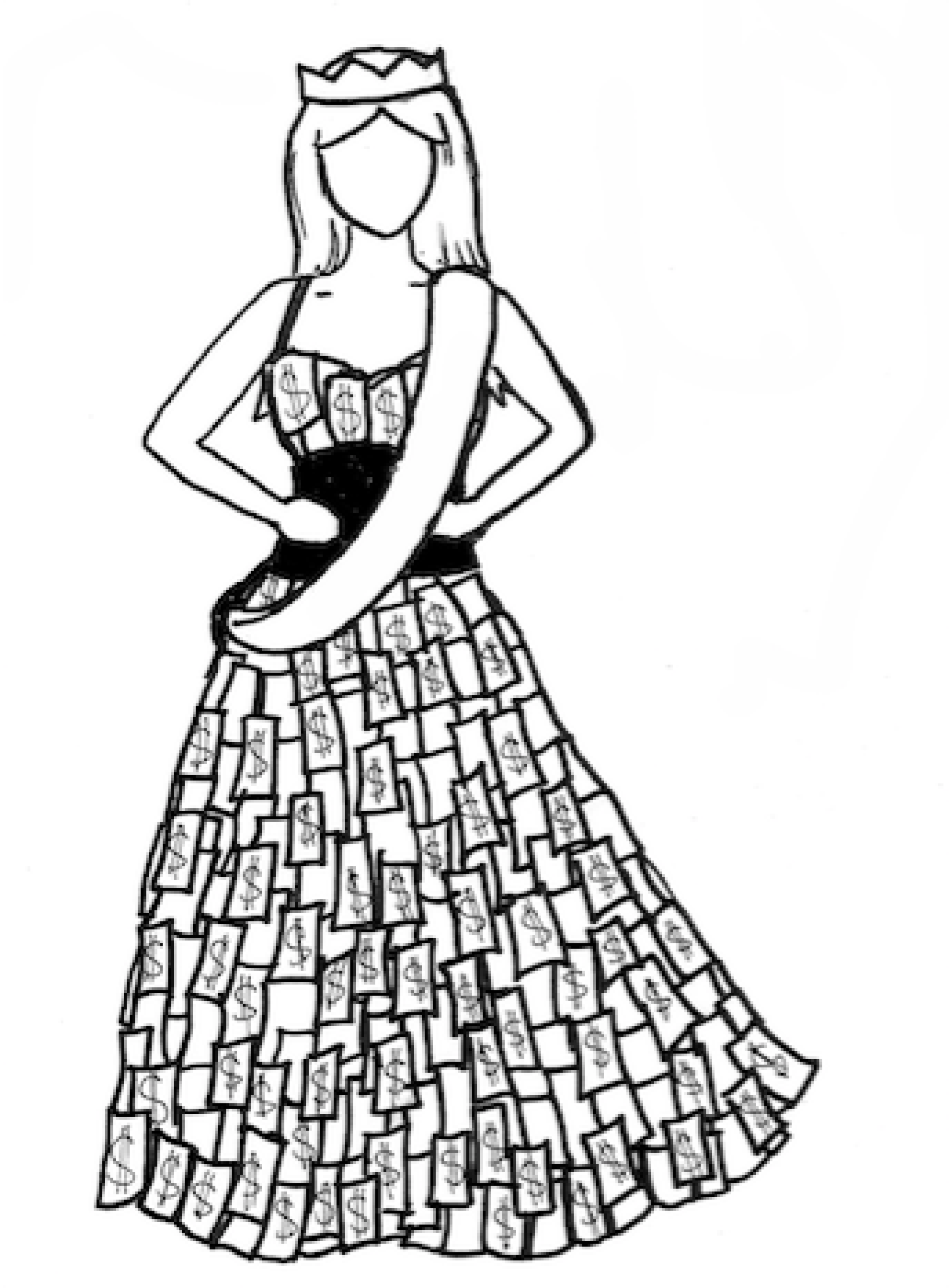Illustration by Grace O'Keefe
On the field, a player breaks free from a defending opponent to cross into the end zone as a roar is heard from the red-and-gold clad fans. Simultaneously, cheerleaders dance, jump, and shake their pom poms to acknowledge the victory. In the theater, the audience is awestruck as the actor on stage delivers a transfixing monologue, and engaged in the creative pieces of art lining the inner gallery walls. In a single day at Berkeley High School (BHS), students participate in countless classes, sports, dance groups, and performances. Each student at Berkeley High is incredibly unique and has the opportunity to explore their passions. However, these programs often have an additional cost—the cost of belonging. In order to be a part of many BHS activities and extracurriculars, students often need to pay fees for materials, uniforms, food, or sometimes transportation. These costs may preclude students of lower economic status from participating, but there is a lot of focus in the community on how to make these activities financially available for all.
Because BHS is Berkeley’s only public high school, the student body consists of a large range of socioeconomic and financial backgrounds. Sophomore Maya Aronson is a student-athlete on the BHS Women’s Varsity Tennis team. She signed up for the sport this August, eager to represent BHS while playing a sport she loves. However, Aronson was not aware when she committed to tennis that there is a cost of $150 for uniforms and other necessities. “The combination of buying a racket and shoes along with the $150 is a lot of money,” Aronson said. “What’s great is that our coach and captains are organizing bake sales to cover the cost for the players that can’t afford the expenses,” she added. Financially able team members are also encouraged to pay more money to help those who cannot afford the expenses. Aronson believes these efforts are great for the team, but she worries this might seem condescending towards those who cannot afford to pay. “Those who are not able to pay the $150 may be embarrassed to come forward and ask for help and may not try out in the first place,” she said.
These efforts to help student athletes financially are similar to the efforts to make dance electives available for all interested students at BHS. Linda Carr, a dance teacher at BHS, teaches electives that appeal to many students, and though there are some costs, students are not required to pay a fee for participation, but donations are requested. Carr said that for class field trips, students are asked to pay extra to cover those who cannot afford the fee and “families with the financial ability offer extra funding for those in need.” She continued to explain that her dance program and class covers the cost of costumes and clothing for performances for those who are not able to pay.
Corey Rowland is a BHS Computer Art teacher in the Visual and Performing Arts department, said that he “can’t help but feel like there may be students who never pursue activities [like his class] in the first place for this reason.”
Rowland has found that one’s identity is partially determined by their financial status, which sometimes deters them from signing up for certain classes or special activities. Rowland mentioned that students “may feel as if they wouldn’t truly be accepted for who they are” in classes that require additional fees.
Even though it might seem like Berkeley High has an endless amount of extra-curricular opportunities available for students, many feel restricted by the costs, and neglect to participate.
However, these students should be aware that many programs, whether they be sports, art, or certain classes, have directed focus on ensuring financial inclusivity by providing financial assistance and fundraising to erase the barrier between cost and participation. As Aronson said, “One’s socioeconomic status is not something that can be changed. But thanks to all the supportive teachers and students in the BHS community, we have made the cost of belonging free.”





